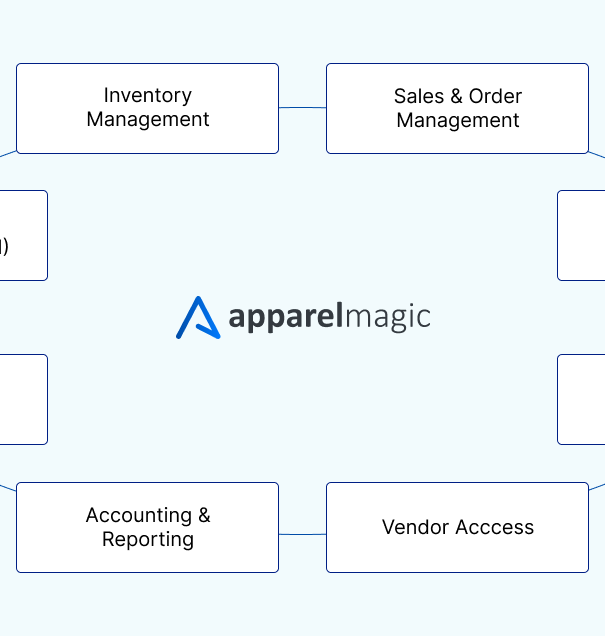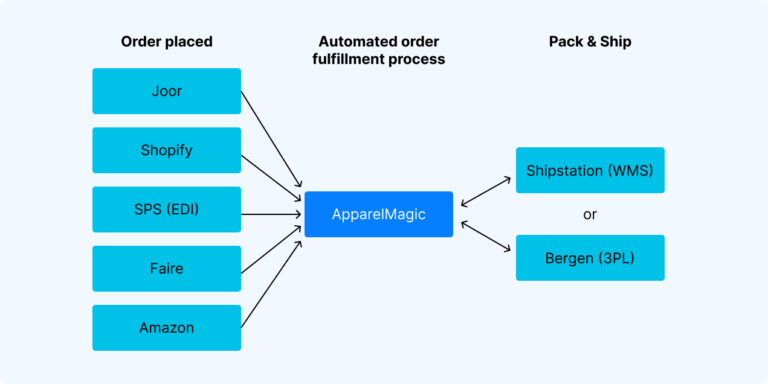As a result of the massive migration of manufacturers and physical retailers online, eCommerce has developed into a fiercely competitive market. If you want to succeed as an eCommerce retailer, you must continue to be profitable while satisfying your consumers’ evolving expectations.
Today’s customers have more purchasing options than ever before, so in order to distinguish your eCommerce store, hold onto a substantial share of your market, boost profitability, and increase customer satisfaction, you need an established, proactive, and successful supply chain management plan.
This article discusses the essentials of eCommerce supply chain management, including how it works, its advantages, and tips on how to improve your supply chain strategy.

Image by ijeab on Freepik
What is an eCommerce Supply Chain
The eCommerce supply chain consists of logistical processes such as the acquisition of raw materials, production of finished goods, warehousing, inventory control, fulfillment, and delivery. A typical eCommerce supply chain also encompasses supply and demand, distribution schedules, and inventory tracking. The objective of eCommerce supply chain management is to ensure high-quality goods, as well as high levels of customer satisfaction.
How does eCommerce supply chain management work?
An eCommerce supply chain begins with the vendor and finishes with the customer — the most important link of the supply chain. eCommerce supply chain management has five stages.
- Planning. During this stage, you gather supply chain data to ascertain the quantity of inventory required to satisfy market and customer demand.
- Sourcing. Searching for suppliers, manufacturers, and vendors during this phase can help you find the inventory your clients will require.
- Making. This phase entails turning raw materials into finished products before putting them through packaging, and storage in preparation for distribution to the final consumers.
- Delivery. The delivery phase is sometimes referred to as logistics. It includes every type of product transfer along the supply chain to the final customer.
- Managing returns. This phase (also known as reverse logistics) entails handling returned products from consumers and sending faulty and expired goods from your storage facility back to your vendor.
The total effectiveness of the supply chain is influenced by each phase of the supply chain management system. A change or problem in one stage has an impact on the entire chain.
Benefits of eCommerce Supply Chain Management
Finding solutions to simplify the supply chain can have a significant influence on both internal operations and consumer experience. Here are a few advantages of optimizing your eCommerce supply chain:
More effective inventory management
Inventory management plays a vital role in the eCommerce supply chain. Proper management of your inventory levels can help you improve stock control, prevent unneeded stockouts and dead stock, and estimate future demand.
Common eCommerce inventory issues can be resolved in a number of ways, including setting reorder points based on past order data and projected future demand, conducting routine inventory audits, and deploying inventory management software.
Faster shipping times
One of the most crucial supply chain steps to get right is shipping. It can provide you with a competitive edge, help you decrease cart abandonment, and make sure you provide excellent customer service.
It is important to identify and eliminate any supply chain delays, particularly those that affect shipment. The two key variables that affect shipment delays include 1) the location of your manufacturers, fulfillment centers, and end consumers; and 2) the mode of transportation (freight, ocean, air).
Reduced costs
There are probably many areas where your eCommerce company invests more than is necessary. Undoubtedly, some of these sectors could be made more efficient. It is worthwhile to examine your supply chain to find potential cost-saving opportunities.
eCommerce supply chain management can help reduce costs in the supply, manufacturing, and distribution process and, as a result, lead to increased profits.
Improved customer experience
An optimized eCommerce supply chain guarantees that you can provide the greatest client experience for each order. By looking for ways to improve the chain, you can lower shipping costs, shorten shipping times, and lessen the possibility of human mistakes because of a poorly managed supply chain.
In addition, you can concentrate more efforts on enhancing customer engagement by letting customers track their orders in real-time and sending them updates from the time an order is received until it is delivered.

Image by Freepik
Top 6 Strategies for Improving Your eCommerce Supply Chain
There are several doable suggestions you may employ to improve your eCommerce supply chain. Reducing shipping costs and delivery times, reorganizing your warehouse, and the usage of cutting-edge technologies are some of the most practical and easily accessible options.
1. Review the state of your supply chain
Your eCommerce business would benefit from reviewing its supply chain tactics, regardless of whether you have only one sales channel or run a multichannel store. By doing this, you can identify workflow problems and determine which of your suppliers might be causing product delays or bottlenecks.
Look for congested areas or weaknesses in your fulfillment process that, if fixed, might significantly improve your entire supply chain.
2. Reorganize your current storage space
Moving to a bigger warehouse site is not always feasible for small businesses or emerging eCommerce brands. However, you can reorganize your current storage space to make it more useful rather than looking for additional square footage.
By redesigning the layout of your distribution center, you can solve inefficiencies in storage capacity and inventory mobility to ensure that your eCommerce supply chain runs smoothly.
3. Reduce your delivery times and shipping costs
Today’s consumers expect quick delivery timeframes; therefore, lowering your shipping rates and subsequent delivery windows is one of the best methods to satisfy consumer expectations.
Remember that reduced prices will increase your profit margins if you offer free shipping; yet, if customers must pay extra for shipping, they are more likely to provide favorable reviews and return to your online store when those prices are low.
4. Improve your workforce management
Most fulfillment facilities still use manual labor, which can become quite costly when your business begins to expand. If automation cannot help you achieve a good ROI, the next best option is to manage your staff more skillfully.
You may manage your workforce more effectively by using productivity benchmarks and better time management to reduce your CPO and raise your order fill rate.
5. Use barcoding technology
Barcode technology has completely altered the way warehouse logistics are conducted. eCommerce stores can track all warehouse activities using barcode scanners and labels, which significantly improves accuracy.
Barcode use also reduces processing times for returns, replenishment, and other tasks, which results in more effective supply chain management.
6. Implement inventory management software
Your eCommerce supply chain might undergo a significant transformation thanks to cutting-edge software solutions like PLM and ERP. Inventory management systems not only provide automation to synchronize and streamline your operational processes, but they also immediately result in cost reductions.
Additionally, inventory management software offers real-time data and 24/7 analytics to assist in maintaining inventory control and streamlining your reordering procedure.
The Bottom Line
Finding ways to streamline your eCommerce supply chain will create a more effective team, reduce hassles, and boost productivity. You will ultimately provide a better customer experience by preventing stockouts, providing better shipping prices, and accelerating delivery times.
ApparelMagic is a comprehensive eCommerce software solution created especially for fashion online retailers. In this new era of online retail, the ApparelMagic system is famous for its capacity to streamline, automate, and expand your company, so that you can skillfully manage all orders and modernize your eCommerce supply chain management in a cost-efficient way.






